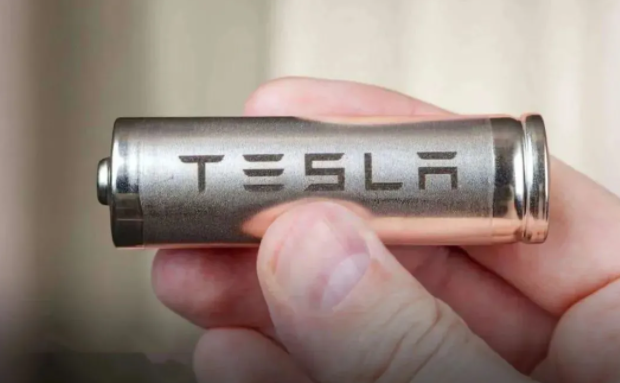Electric vehicles are cruising into a new era, thanks to Tesla’s innovative 4680 battery cells. Launched with much anticipation, these batteries are set to redefine what we expect from EV range and performance. But how exactly are these new battery cells transforming the landscape of electric mobility in 2023? In this article, we’ll delve into how Tesla’s 4680 battery cells are changing the game, explore their technological advancements, and consider what this means for the future of sustainable transportation.
The Revolution of Tesla’s 4680 Battery Cells
What Makes 4680 Batteries Stand Out?
Tesla’s 4680 battery cells are not just another iteration in battery technology; they represent a paradigm shift. Named for their dimensions—46mm diameter and 80mm height—these cells are designed to deliver higher energy density and improved thermal management. According to Tesla, these batteries can increase an electric vehicle’s range by up to 16%, a significant leap forward in EV technology (Electrek, 2023).
Key Features:
- Increased Energy Density: By optimizing the design, Tesla has managed to pack more energy into each cell, which translates to longer driving ranges.
- Improved Thermal Management: Better heat dissipation reduces the risk of overheating, enhancing safety and battery life.
- Lower Production Costs: The larger format reduces the number of cells needed per battery pack, lowering overall manufacturing costs.
How the 4680 Battery Impacts EV Range
One of the most compelling advantages of the 4680 battery cells is their impact on electric vehicle range. As per InsideEVs, Tesla’s new cells can extend the range of their vehicles by an impressive margin. For instance, the Tesla Model S, with its current battery technology, offers a range of approximately 405 miles. With the incorporation of 4680 cells, this range could potentially surpass 470 miles on a single charge.
Benefits for Drivers:
- Fewer Charging Stops: Longer ranges mean drivers can travel further without needing to recharge, making EVs more convenient for long-distance travel.
- Enhanced Efficiency: The improved energy density ensures that every watt is used more effectively, reducing energy waste.
The Future of Charging with 4680 Batteries
Charging infrastructure is a critical component of EV adoption, and Tesla’s 4680 battery cells promise to streamline this process. With the increase in energy density, these batteries require less frequent charging, easing the load on public charging stations. The supercharging time is also expected to decrease, thanks to the improved thermal management and advanced battery chemistry (CleanTechnica, 2023).
Charging Tips:
- Utilize Off-Peak Hours: Charge your vehicle during off-peak hours to take advantage of lower electricity rates and less crowded stations.
- Monitor Battery Health: Regularly check the battery’s health status via the Tesla app to ensure optimal performance.
Comparing 4680 Batteries with Competitors
Tesla’s advancements with the 4680 cells set a high bar for competitors like Rivian, Lucid Motors, and Ford EV. While other brands are also innovating, Tesla’s focus on vertically integrated battery production gives it a unique advantage. For example, Lucid Motors’ Air Dream Edition offers a 516-mile range, but it’s worth noting that Tesla’s enhancements are aimed at mass-market affordability and scalability, unlike niche luxury competitors (Bloomberg Green, 2023).
Comparison Highlights:
- Tesla vs. Rivian: Rivian focuses on rugged, off-road capabilities with a range of about 314 miles, but Tesla’s 4680 aims for a balance of range and performance.
- Tesla vs. Ford EV: Ford’s Mustang Mach-E offers a range of approximately 312 miles, showcasing Tesla’s superior range capabilities with its new cells.
Practical Value: Making the Most of Your EV
Whether you’re considering purchasing a Tesla with 4680 batteries or already own an EV, there are several ways to maximize your vehicle’s performance:
- Optimize Driving Habits: Smooth acceleration and braking can conserve energy and extend range.
- Regular Maintenance: Keep tires inflated to the recommended pressure and perform regular software updates.
- Use Regenerative Braking: This feature can recover some energy lost during braking, further extending your range.
Conclusion: Embracing a Battery-Powered Future
Tesla’s 4680 battery cells are more than just a technological advancement; they are a glimpse into the future of electric vehicles. By offering longer range, improved efficiency, and cost-effective production, these batteries are set to make EVs more accessible and practical for everyday use. As we move towards a cleaner, more sustainable mode of transportation, the 4680 cells represent a significant step forward.
Are you ready to experience the next generation of electric vehicles? Explore the possibilities with Tesla’s latest innovations, and join the movement towards a greener future. As battery technology continues to evolve, who knows what incredible advancements await us in the coming years? Share your thoughts on how you think Tesla’s innovations will influence the industry, and let’s drive forward together.

